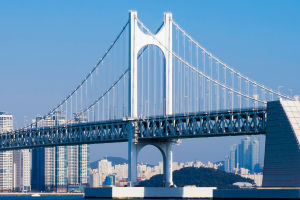High-rise buildings are iconic structures commonly seen in urban landscapes, generally defined as tall, multi-story buildings that stand out above surrounding structures.
They play significant roles in urban planning and development, yet come with a range of advantages and disadvantages. Let's delve into the definition, advantages, disadvantages, and impacts of high-rise buildings on cities and societies.
High-rise Definition
There isn't a strict definition for high-rise buildings, but generally, they refer to large buildings that exceed the height of surrounding structures in a city or area.
In different countries and regions, the definition and standards for high-rise buildings vary. Typically, buildings taller than 50 meters can be classified as high-rise, though this is a basic reference standard.
High-rise Advantages
1. Space Efficiency: In densely populated cities, high-rise buildings can accommodate more residential, commercial, and office space on limited land, effectively utilizing urban land resources.
2. Urbanization: High-rise buildings symbolize and drive urbanization, reflecting the level of city development and economic prosperity.
3. Landmark Effect: High-rise buildings often become city landmarks, attracting tourists, businesses, and investments, helping to enhance the city's visibility and image.
4. Views and Scenery: High-rise buildings usually provide panoramic city views, allowing residents and visitors to appreciate the city's magnificent scenery.
5. Environmental Benefits: Compared to dispersed low-rise buildings, high-rises are more conducive to energy efficiency and resource sharing, such as centralized heating, solar energy utilization, etc., benefiting the environment.
High-rise Disadvantages
1. Risks and Safety: High-rise buildings pose higher risks of fire, earthquakes, and other disasters, requiring more complex safety facilities and management.
2. Social Segregation: High-rise buildings often cater to high-income groups, potentially exacerbating the exclusion and social segregation of low-income residents in cities.
3. Traffic Congestion: Concentrating a large population and activities in high-rise buildings can lead to traffic congestion in surrounding areas, affecting urban traffic flow.
4. Lighting and Ventilation: Some rooms in high-rise buildings may suffer from insufficient lighting and ventilation, affecting living comfort.
5. Ecological Impact: The construction of high-rise buildings often requires a significant amount of land and resources, which may lead to environmental damage and disruption of ecological balance in surrounding areas.
High-rise Impact
1. Urban Landscape: High-rise buildings alter the appearance and skyline of cities, shaping their image and style.
2. Economic Development: Serving as commercial and office centers, high-rise buildings drive economic development and employment growth in cities.
3. Cultural Exchange: High-rise buildings serve as platforms for culture and art, enriching the cultural atmosphere and exchange activities in cities.
4. Social Integration: The mix of different social groups and cultures within high-rise buildings helps promote social integration and cultural exchange.
5. Sustainability: Sustainable design and operation of high-rise buildings contribute to urban ecological balance and sustainable development.
In conclusion, high-rise buildings have notable advantages but also present challenges and drawbacks that need to be addressed. In urban planning and development, it's essential to consider both the pros and cons, finding the optimal balance to promote healthy and sustainable city development.


